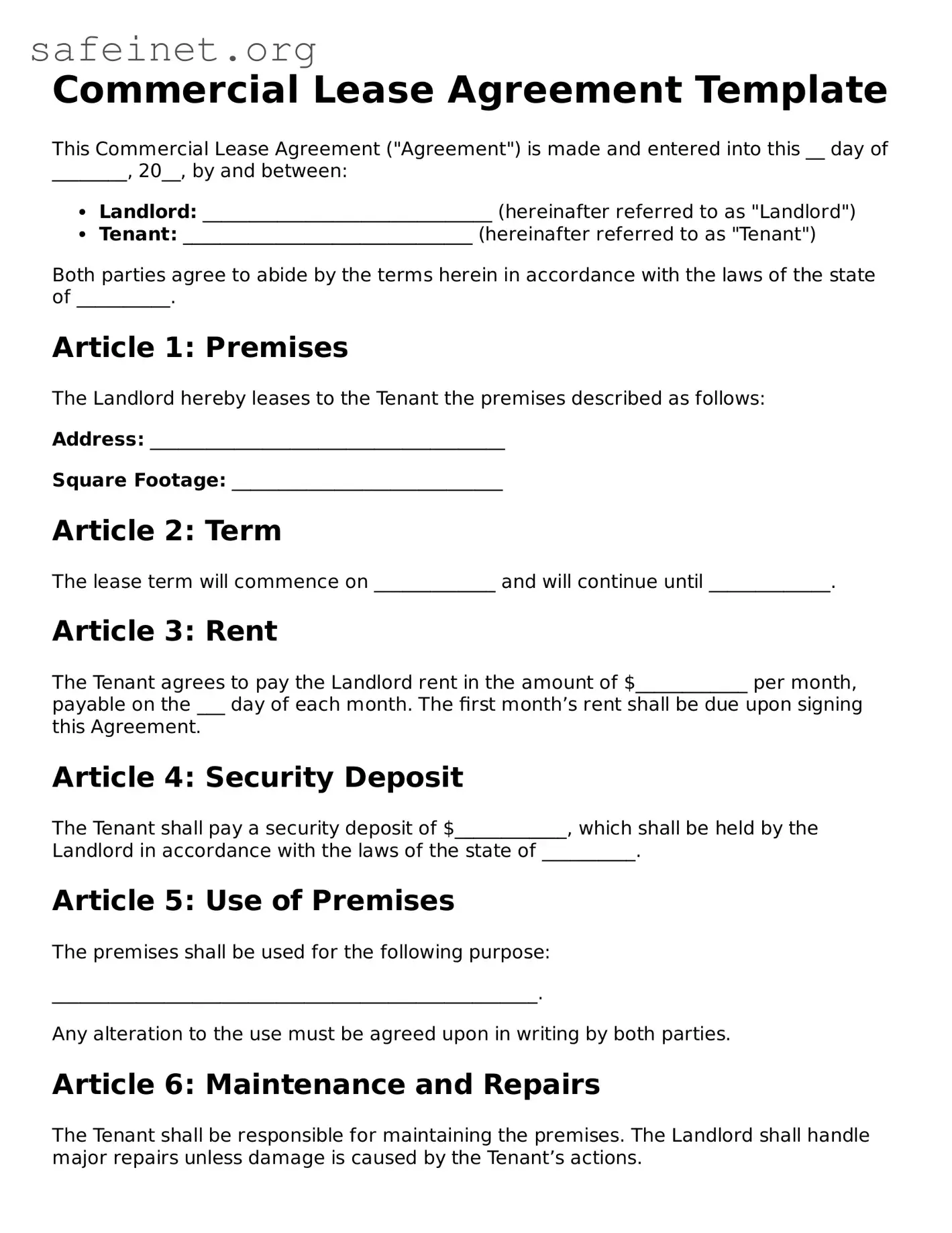Commercial Lease Agreement Template
This Commercial Lease Agreement ("Agreement") is made and entered into this __ day of ________, 20__, by and between:
- Landlord: _______________________________ (hereinafter referred to as "Landlord")
- Tenant: _______________________________ (hereinafter referred to as "Tenant")
Both parties agree to abide by the terms herein in accordance with the laws of the state of __________.
Article 1: Premises
The Landlord hereby leases to the Tenant the premises described as follows:
Address: ______________________________________
Square Footage: _____________________________
Article 2: Term
The lease term will commence on _____________ and will continue until _____________.
Article 3: Rent
The Tenant agrees to pay the Landlord rent in the amount of $____________ per month, payable on the ___ day of each month. The first month’s rent shall be due upon signing this Agreement.
Article 4: Security Deposit
The Tenant shall pay a security deposit of $____________, which shall be held by the Landlord in accordance with the laws of the state of __________.
Article 5: Use of Premises
The premises shall be used for the following purpose:
____________________________________________________.
Any alteration to the use must be agreed upon in writing by both parties.
Article 6: Maintenance and Repairs
The Tenant shall be responsible for maintaining the premises. The Landlord shall handle major repairs unless damage is caused by the Tenant’s actions.
Article 7: Utilities
Utilities will be arranged and billed as follows:
- Electricity - (Tenant/Landlord)
- Water - (Tenant/Landlord)
- Gas - (Tenant/Landlord)
- Internet - (Tenant/Landlord)
Article 8: Termination
This Agreement may be terminated by either party under the following conditions:
- Upon expiration of the term with proper notice.
- For breach of terms outlined in this Agreement.
Article 9: Governing Law
This Agreement shall be governed by the laws of the state of __________.
Article 10: Signatures
In witness whereof, the parties hereto have executed this Commercial Lease Agreement as of the date first above written.
Landlord Signature: ____________________________ Date: ____________
Tenant Signature: ____________________________ Date: ____________
This Commercial Lease Agreement is designed to be clear and straightforward, allowing both parties to understand their rights and obligations. In completing the template, make sure to fill in the blanks accurately to create a legally binding document tailored to your specific arrangement.
